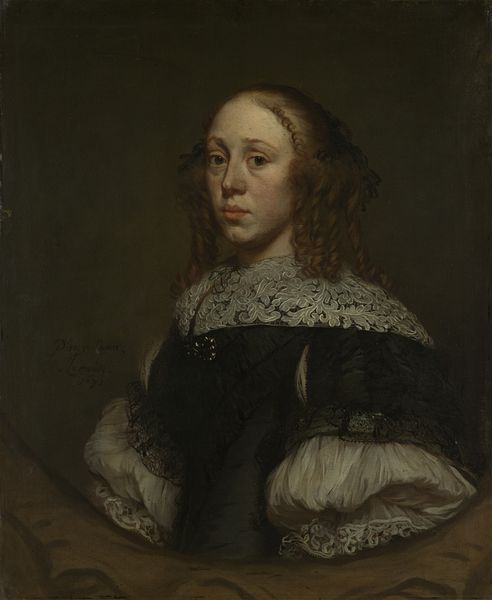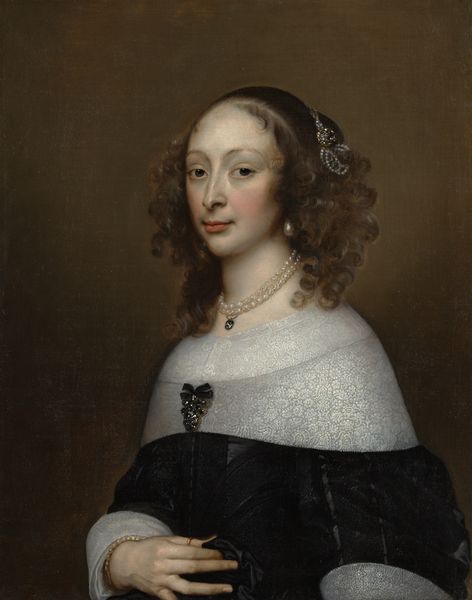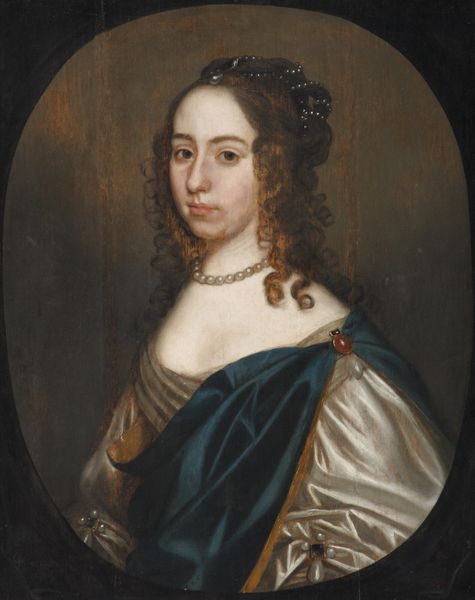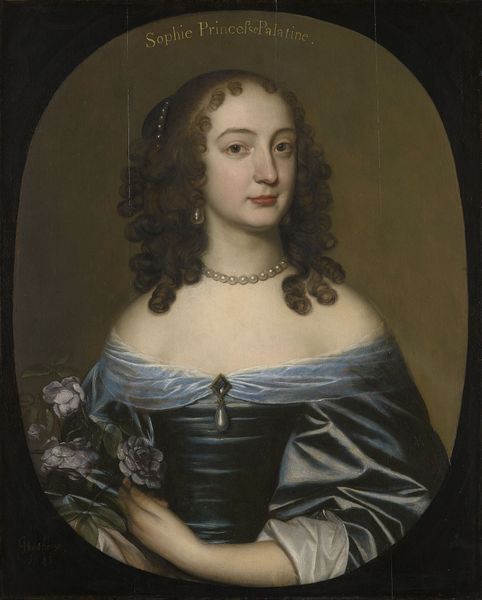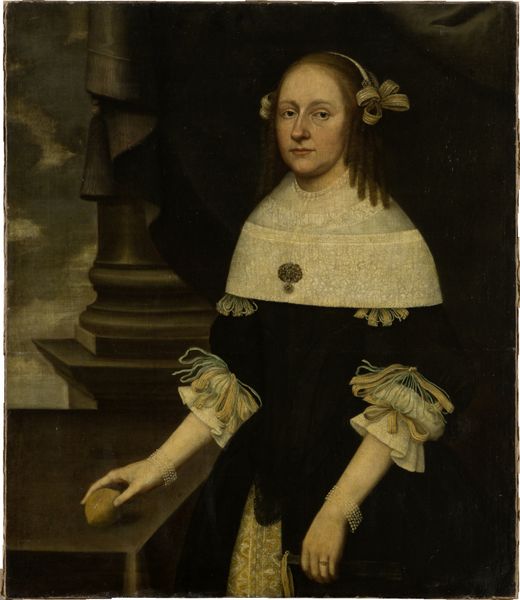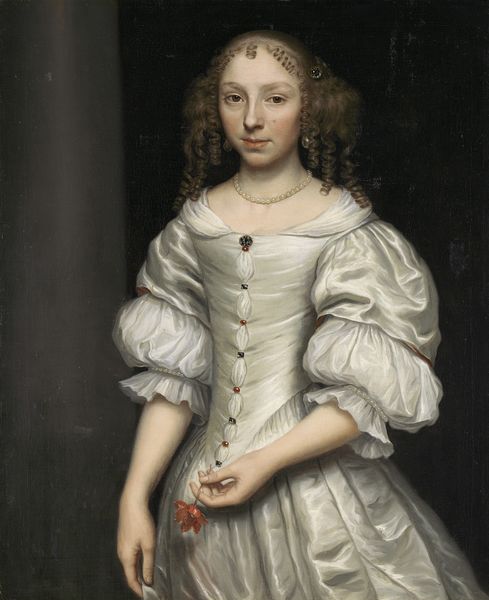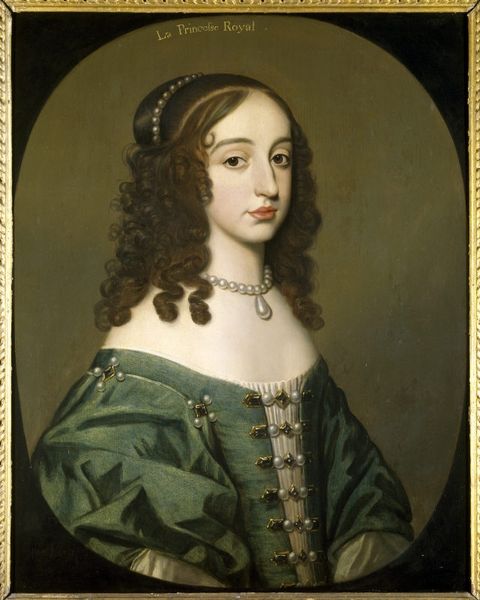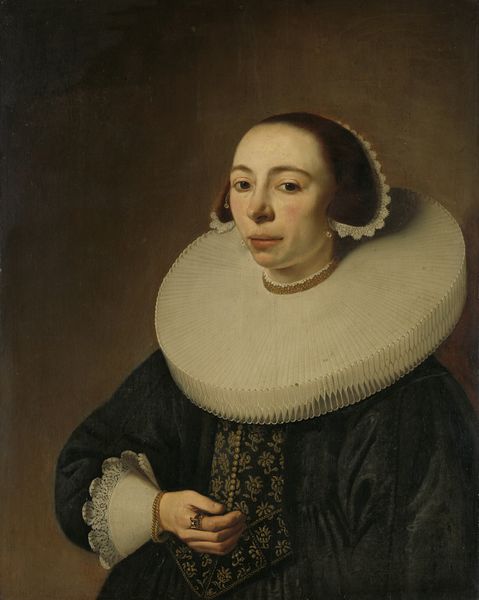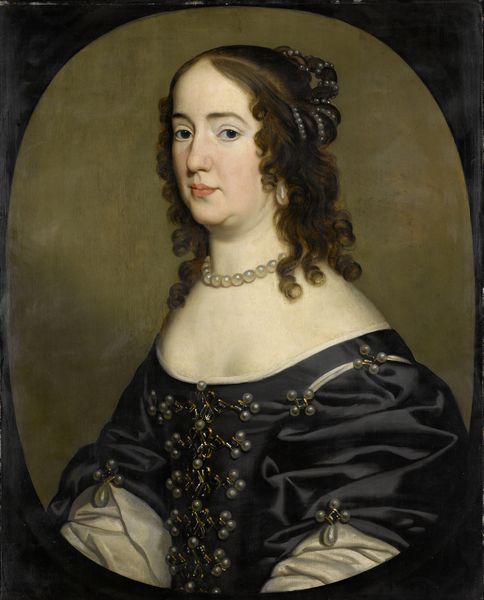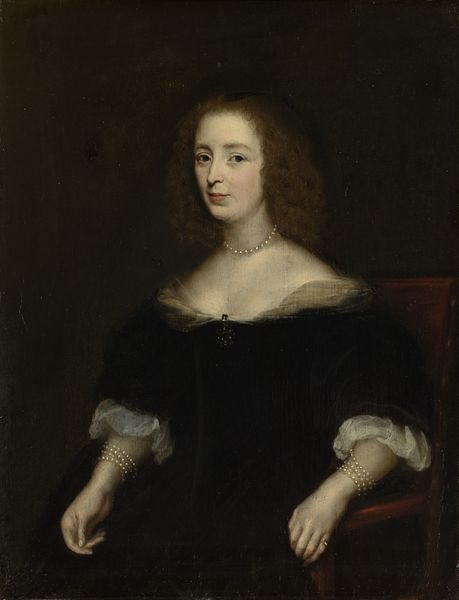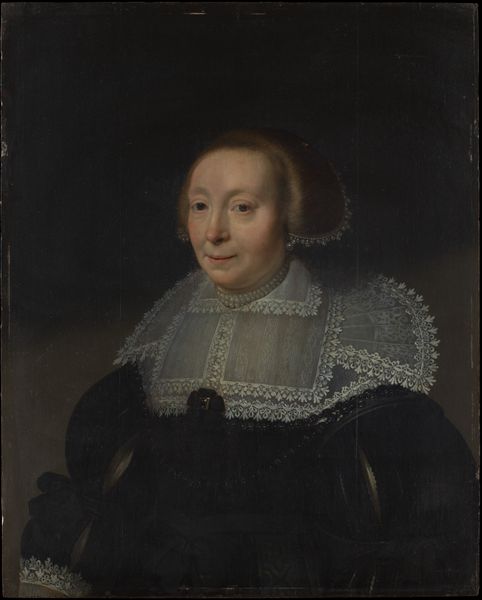
painting, oil-paint
#
portrait
#
baroque
#
dutch-golden-age
#
portrait
#
painting
#
oil-paint
#
figuration
#
realism
Dimensions: Overall 40 3/4 x 31 1/2 in. (103.5 x 80 cm); painted surface 40 3/4 x 30 7/8 in. (103.5 x 78.4 cm)
Copyright: Public Domain
Editor: This is "Portrait of a Woman" by Cornelis Jonson van Ceulen the Elder, painted in 1648. It's an oil painting, and the woman depicted has such a poised, yet almost melancholic expression. What do you see in this portrait, particularly considering its historical context? Curator: What strikes me is the tension between the apparent privilege on display – the rich fabric of her dress, the jewelry – and the relative constraint of the pose. These portraits were often commissions that asserted status and lineage, but how does the artist perhaps hint at the limitations placed upon women of this era? Look at the almost performative humility in the crossed hands, the averted gaze, all while holding a feather in her hand; a display item more than a functional tool. Editor: That's interesting, the idea of a ‘performative humility.’ I hadn't considered the ways women had to modulate their presentation at the time. Does the Dutch Golden Age setting add another layer to this? Curator: Absolutely. The Dutch Golden Age was a period of burgeoning wealth and trade, but also intense social regulation, particularly for women. While there might have been some expanded economic opportunities, these were coupled with very specific expectations about domesticity and piety. The woman's stillness speaks to that. What isn't shown? Who isn’t depicted or offered the dignity of representation? Editor: So, it's a portrait, but also a commentary on the constraints of femininity at the time? It gives me a new perspective on how to view portraiture of this era, now. Curator: Exactly. It prompts us to consider what is being shown, but also what is deliberately concealed, and what societal norms dictated those choices in representation. The portraits from this era are documents that deserve interrogation with consideration of these societal pressures. Editor: I’ll definitely keep that in mind going forward. Thanks for this new outlook!
Comments
No comments
Be the first to comment and join the conversation on the ultimate creative platform.
